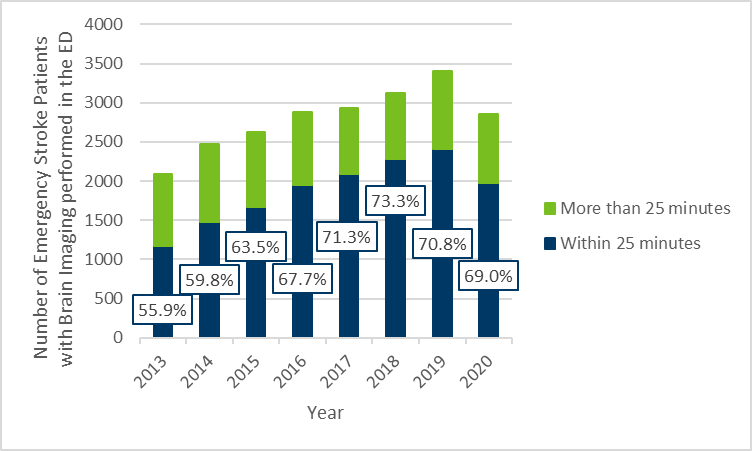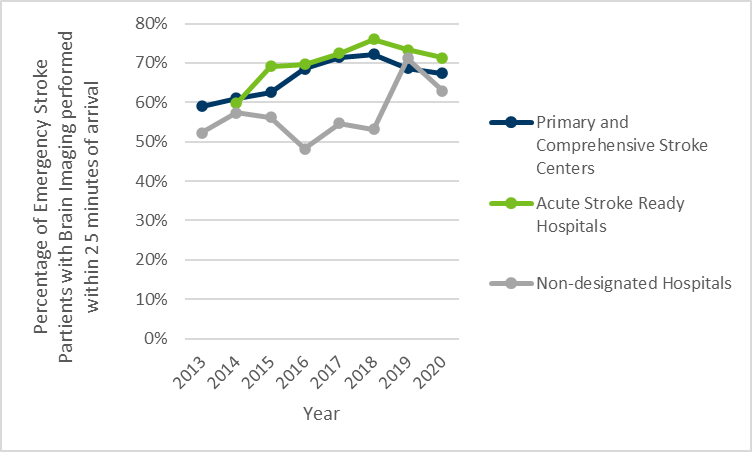Cardiovascular Health
- Cardiovascular Health Home
- CVH Data and Trends
- CVH Programs & Resources
- Minnesota 2035 Plan
- Minnesota Stroke Program
- About Us
Learn More
Related Topics
Contact Info
Cardiovascular Health Program
Cardiovascular Health Indicator
Measure: Door-to-Imaging within 25 minutes
| Indicator | Date of Most Recent Measure | Current Measure | Trend |
|---|---|---|---|
| Emergency Department Door-to-Imaging within 25 minutes | 2020 | 69.0% | Stable |
Overview
- A stroke is a medical emergency. Patients suspected of stroke need to be evaluated as quickly as possible, including getting a brain imaging scan to determine the type of stroke and their eligibility for treatment in the hospital.
- In 2020, approximately seven of ten stroke patients arriving at Minnesota hospitals met the national stroke treatment goal of having a brain imaging scan initiated within 25 minutes of arriving in the emergency department.
- This measure is significantly higher (up by 13 percentage points) since 2013, but has stayed relatively stable in the most recent two years.
- Patients arriving at Primary or Comprehensive Stoke Centers or Acute Stroke Ready Hospitals designated by the Minnesota Department of Health have consistently been more likely to get their brain imaging scan within 25 minutes.
See Also:
Last Updated: 01/03/2023

